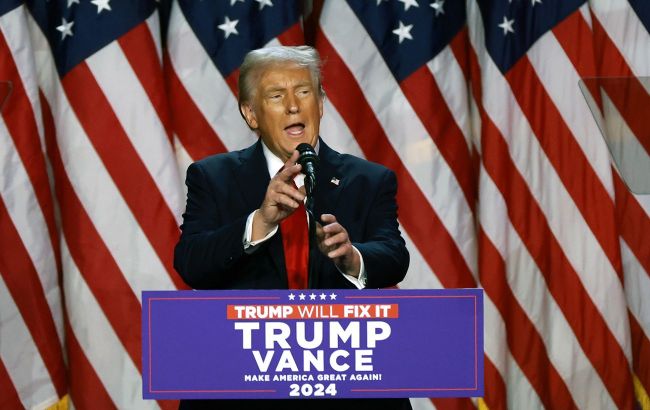Trump wants to increase tariffs on imports from Mexico, Canada, and China
 Newly elected US President Donald Trump (photo: Getty Images)
Newly elected US President Donald Trump (photo: Getty Images)
The newly elected US President, Donald Trump, confirmed plans to impose tariffs on goods imported from Mexico, Canada, and China. The fulfillment of this campaign promise has caused a shock on global financial markets, reports ABC News.
According to Trump, these tariffs are intended to stop the flow of drugs entering the US and illegal border crossings.
On his platform, Truth Social, Trump wrote that one of the first executive orders he would sign upon taking office on January 20, 2025, would be the introduction of a 25% tariff on all goods entering the US from Mexico and Canada.
"This Tariff will remain in effect until such time as Drugs, in particular, Fentanyl, and all Illegal Aliens stop this Invasion of our Country! Both Mexico and Canada have the absolute right and power to easily solve this long-simmering problem. We hereby demand that they use this power, and until such time that they do, it is time for them to pay a very big price," Trump wrote.
Chinese shock and its consequences
In another post, the newly elected president announced that he would impose an additional 10% tariff on goods coming from China. He justified this by claiming that the country was doing insufficiently to stop the flow of illegal drugs.
"Representatives of China told me that they would institute their maximum penalty, that of death, for any drug dealers caught doing this but, unfortunately, they never followed through, and drugs are pouring into our Country, mostly through Mexico, at levels never seen before," Trump asserted.
During his presidential campaign, Trump promised to impose tariffs of 60% to 100% on Chinese goods, as well as a 10% to 20% tax on every item imported from all US trade partners.
The day before the elections, Trump stated at a rally in Pittsburgh, "I'm putting tariffs on Mexico. Every damn thing that they sell into the United States has got to have like a 25% tariff until they stop drugs from coming in."
Economists predict that such large-scale tariffs will lead to rising prices for American consumers, as importers usually pass on part of the cost through these higher taxes to consumers.
According to estimates by the Peterson Institute for International Economics, Trump's tariffs could cost the average American household about $2,600 per year.
How the markets react
These tariff plans by Trump have also had some impact on the start of trading in Asia.
Immediately after 01:30 GMT, the Shanghai Composite dropped by approximately 0.2%, the Nikkei fell by 1.4%, and futures for European stock indices decreased by more than 1%.
The Hong Kong Hang Seng index remained unchanged.
Due to Trump's tariff intentions, both the Australian and New Zealand dollars weakened, and the US dollar saw a sharp rise.
The Australian dollar dropped by 1%, reaching $0.6438, the lowest level since early August, and broke through the key support level of $0.6441. It failed to break through the resistance at $0.6550 during the night, and now the support level is far below the August minimum of $0.6349.
The New Zealand dollar fell by 0.6%, reaching $0.5812, its lowest level in a year, with support now very weak at $0.5774, a level last seen in October 2023.
Trump's trade wars
According to analysts from Bank of America, during the first half of 2025, under the presidency of Donald Trump, a 5% drop in the currencies of emerging markets is expected, along with a sell-off of sovereign bonds.
For more details on how the new president plans to increase tariffs on imports from Mexico, Canada, and China, and how global markets are reacting, read the article by RBC-Ukraine.

